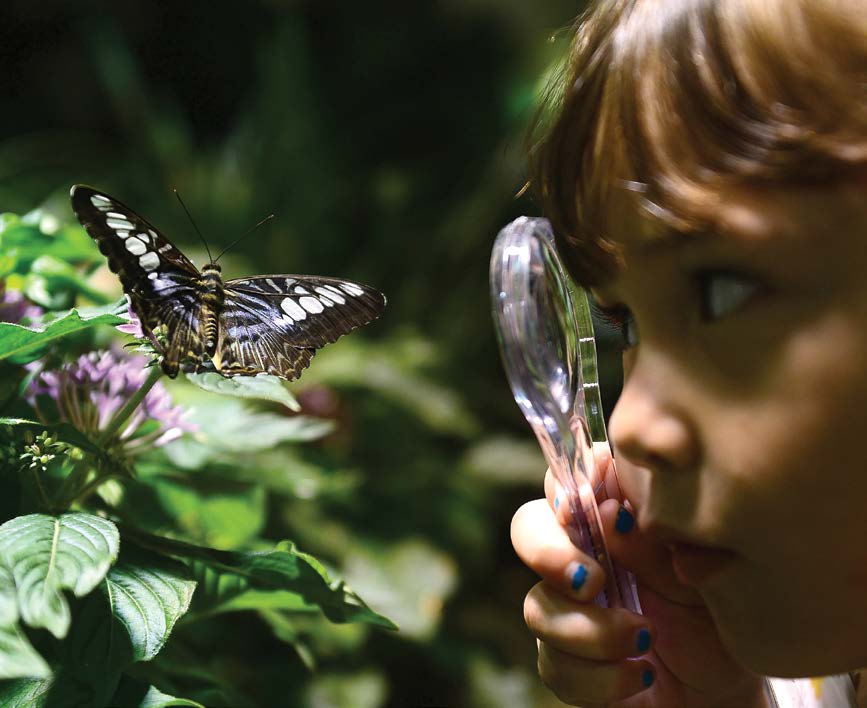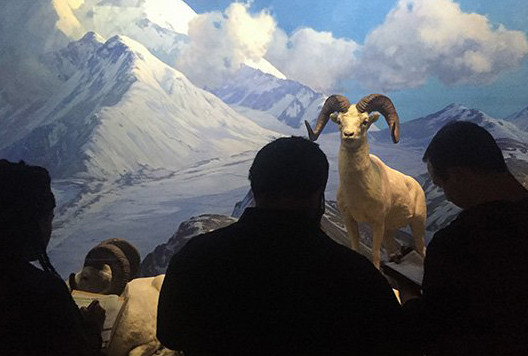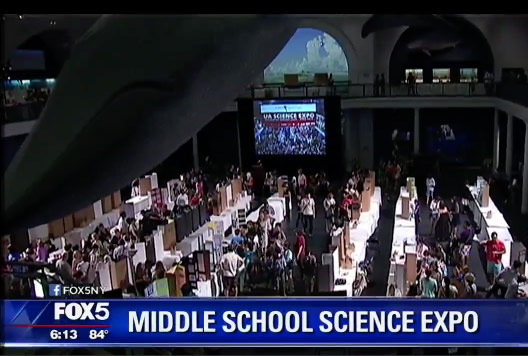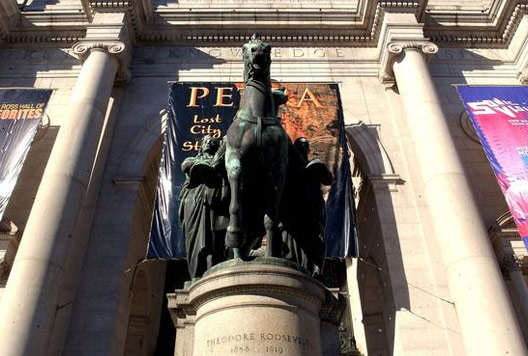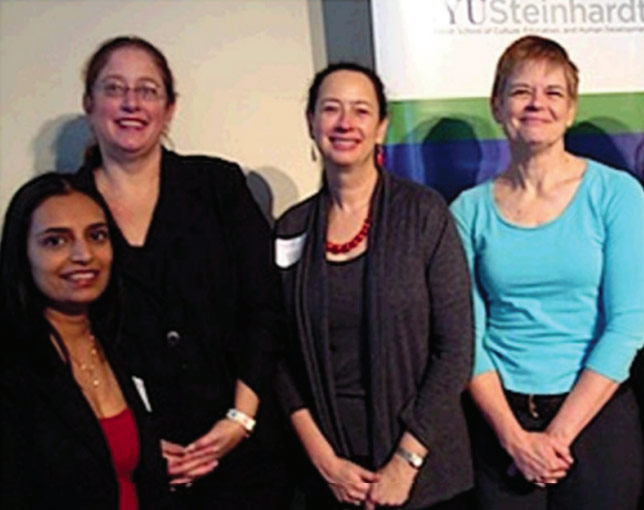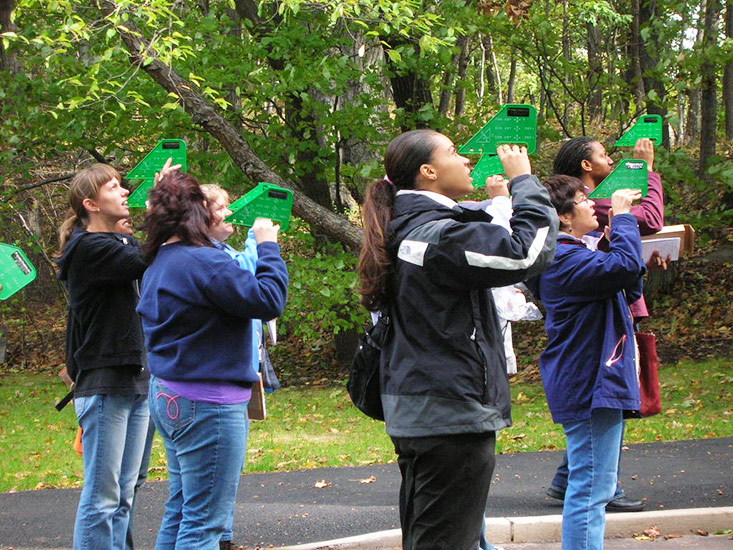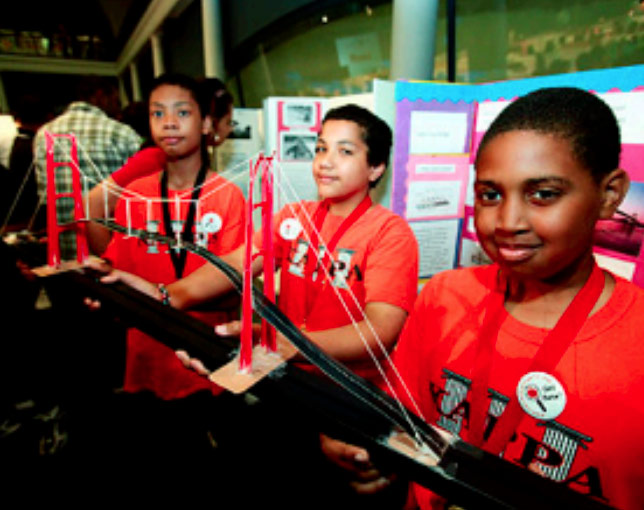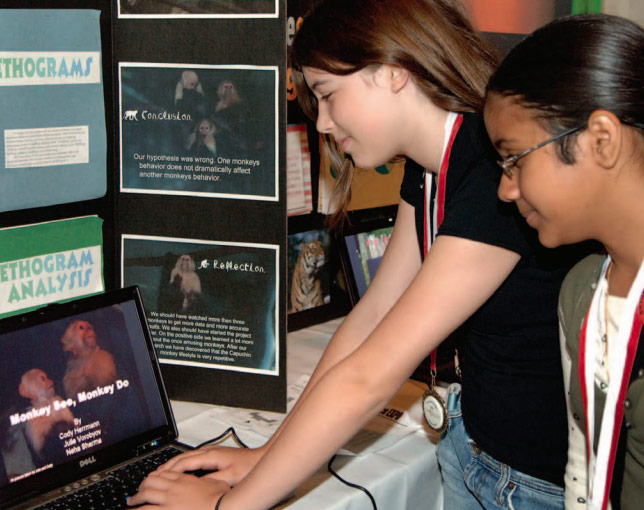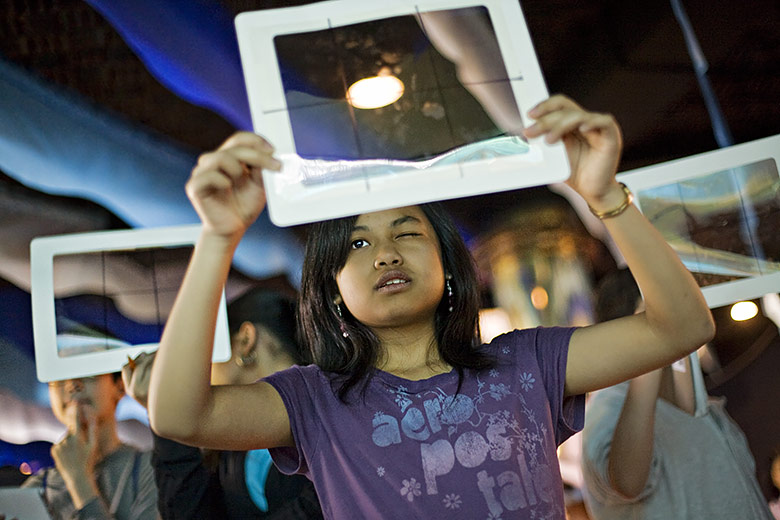UA in the News
Carnegie Reporter (Summer 2018) - All in the Family
How do kids learn best? An old truth states that kids do better in school when their families and communities are involved in their education.
Science museums and centers around the
country are discovering innovative ways to
inspire students’ interest in STEM subjects —
including getting the whole family involved
in exploring the wonders of science.
am New York (June 10, 2018) - American Museum of Natural History hosts middle school science fair
Urban Advantage’s middle school science program pairs students and teachers with some of the top cultural institutions in the city to help them delve into research projects.
The program, in its 14th year, ends with a science fair like no other. On Saturday, more than 900 students from city middle schools gathered under the museum’s iconic model blue whale with experiments and presentation boards in tow.
Read MoreEducation Week (May 1, 2018) - Museums Are Dabbling in Teacher Training, and the Results Are Promising
In the dimly lit Hall of Mammals in the American Museum of Natural History here, small clusters of teachers scrutinized dioramas of animal habitats from around the world, filling in sheets of field observations. The task served as a way to help teachers think through how their students would experience the exhibits, and how teachers could tie their students’ exploration of the museum to public data sets on temperature, rain, and other climate factors that could affect where plants and animals live.
Read MoreFOX News 5 (June 10, 2017) - Middle School Science Expo
More than 900 students taking over the American Museum of Natural History today for the largest middle school science expo in New York City. Participates coming from all five boroughs. Their research projects ranging from the effects of fidget spinners controlling stress to body heat to generate useable electricity.
Watch VideoNBC New York (June 10, 2017) - 400+ Science Projects on Display at Museum
More than 900 middle schoolers are showcasing science projects on topics from monkey grooming to solar ovens at a New York City museum. The American Museum of Natural History says Saturday’s event is the city’s largest middle school science expo. It features more than 400 student projects. Subjects include the effects of fidget spinner toys on controlling stress, using body heat to generate electricity and studying the effect of water from the polluted Gowanus water on the health of seaside goldenrod plants.
Read MorePopular Science (August 18, 2015) - How to inspire the next generation
We have a genuine crisis in this country in the basic understanding of science. It affects our global competitiveness as a country, our national security, and I would argue equally it affects the effectiveness of our democracy. We know that an awful lot of teachers who are teaching science today have not been properly empowered to do so. Science is not just a body of facts; it’s a process. And to present it with appeal and excitement you need to portray it as a detective story—asking questions, making observations, and amassing evidence. You test and you fail because, you know, failing can lead to eureka.
Read MoreCSA News (March 2012, Volume 45 Number 7) - Museums, Zoos and Gardens: What a Way to Learn!
Urban Advantage provides middle school students and their families access to some of the city’s major science and cultural institutions while supporting and enhancing their school’s science program.“Science permits children to think out-of-the-box,” said Assistant Principal Jane Novatt of Isaac Newton MS for Math and Science in East Harlem. She says Urban Advantage (UA) teachers enjoy participating in the program, especially the 48 hours of extensive professional development they receive year round. “They all buy into Urban Advantage,” she added.
Read MoreDaily News (Monday June 13, 2011) - Kids show off smarts at American Museum of Natural History science fair
City kids got to show off their science smarts Sunday at a spot that’s a lot classier than the school cafeteria.Thalia Jaca, 14, an eighth-grader from the Manhattan Academy of Technology on the lower East Side, was one of more than 800 middle schoolers who presented their projects in a science fair at the American Museum of Natural History.
Thalia spent three weeks studying Jacob, a sea otter, at the New York Aquarium. She said the experience gave her lots of respect for her research subject.
Read MoreAt a Glance: News from the NYU Steinhardt Community (March 2011) - Policy Breakfast Explores Role NYC’s Science-Rich Institutions Play in STEM Education
Zack, a middle school student at MS 255, the Salk School of Science, was studying experimental design. He had a hypothesis: puffins spent more time in water than on land. To test his hypothesis, he went to the Bronx Zoo to collect data. While so me of his peers were observing gorillas, flamingos, or zebras, Zack spent his afternoon in the aquatic birdhouse, observing puffins.As a student who benefits from New York City’s public school partnership with Urban Advantage (UA), Zack had a unique opportunity: he could collect data with his peers during a Friday field trip to the Bronx Zoo, and then, with an admission voucher provided by UA, visit the zoo again with his family on Sunday afternoon to double- check his results.
Read MoreScience in Sight (NSTA Reports, February 2011) - Partnering for Urban Science Education
In New York City and Denver, Colorado, a standards-based partnership program called Urban Advantage (UA) is connecting public schools and local science cultural institutions to improve science literacy among urban middle school students. UA helps develop “a collaborative process among schools, teachers, and informal education venues,” explains Elizabeth Leenhouts, project coordinator for UA Metro Denver at the Denver Museum of Nature & Science.
Read MoreDaily News (June 13, 2010) - 900 NYC middle school students shine in Urban Advantage Science Exposition
The exhibition, which began in 2004 with 30 schools, attracted 174 this year and featured projects ranging from music’s effect on pulse rate to how dog saliva inhibits bacteria growth.”It’s truly a celebration of work, not a competition,” said Jim Short, 45, the director of Gottesmann Centre for Science Teaching and Learning.
Read MoreRotunda (July/August/September 2009) - Urban Advantage: A Seed Takes Root
Explore the surprising and sometimes bizarre world of extinct and living mammals. This exhibition examines the ancestry and evolution of an astonishing range of mammal species, showcasing such “extreme” adaptations as oversized claws and fangs, jaw-dropping speed, and massive–or miniscule–body size.
Read MoreEducation Week (June 6, 2008) (Published online) - Lessons at the Museum
The crowd squeezes in front of her. Shouts and squeals echo all around. There’s little light, so she works by the faint glow of a cellphone.Elena Petrovska will not be deterred.
She is shadowing the queen angelfish.
The 12-year-old and her class partner are facing a massive fish tank, a replica of a Central American reef located within a darkened wing of the New York Aquarium. Their task, and that of their classmates gathered here today, is one of the most fundamental in science: conducting a field study. The two-person teams are tracking the movements of fish through different sections of the tank, recording data, and drawing conclusions, based on the behavior they observe. The goal is to design a tank of their own suitable to the fish’s natural habitat.
Read MoreEducation Update (June 2006) - Encouraging Young Scientists at the American Museum of Natural History
Recently the Urban Advantage Middle School Exit Project Initiative marked the end of another successful year with its 2nd Annual City-Wide Science Expo. Seven institutions (the American Museum of Natural History (AMNH), the Brooklyn Botanical Garden, the New York Botanical Garden, the New York Hall of Science, the Queens Botanical Garden, the Staten Island Zoo and the Wildlife Conservation Society) and the New York City Department of Education teamed up to form Urban Advantage, an educational program offering professional development in research skills, resources and equipment for students and schools, visits to the participating institutions, and events for participants throughout New York City. With over 20,000 students, 195 teachers,
and over 60 schools involved in 2006, the number of participants had increased by more than two-thirds since last year and Urban Advantage continues to reach out to schools.
The New York Times (December 4, 2004) - Helping Eighth Graders Discover a Wider World of Science
Salina Morales, an eighth-grade student at Middle School 188 in Park Slope, Brooklyn, wants to work with animals when she gets older, perhaps as a marine biologist. She shared her intentions with friends yesterday during a class visit to the American Museum of Natural History — a field trip that brought the number of museums she has visited in her life to two. Salina is among thousands of eighth graders in the city’s public schools whose science education will be given a boost by a new partnership between the schools and seven of the city’s science-oriented institutions, officials announced yesterday.
Read More